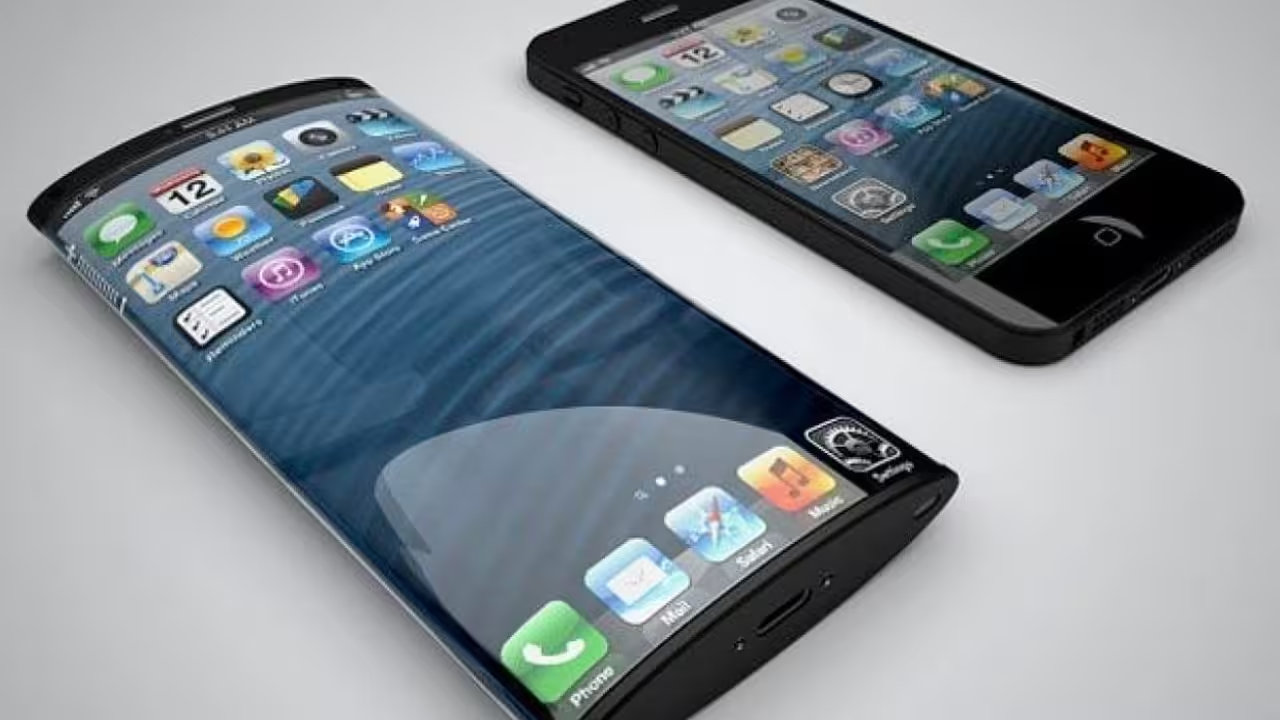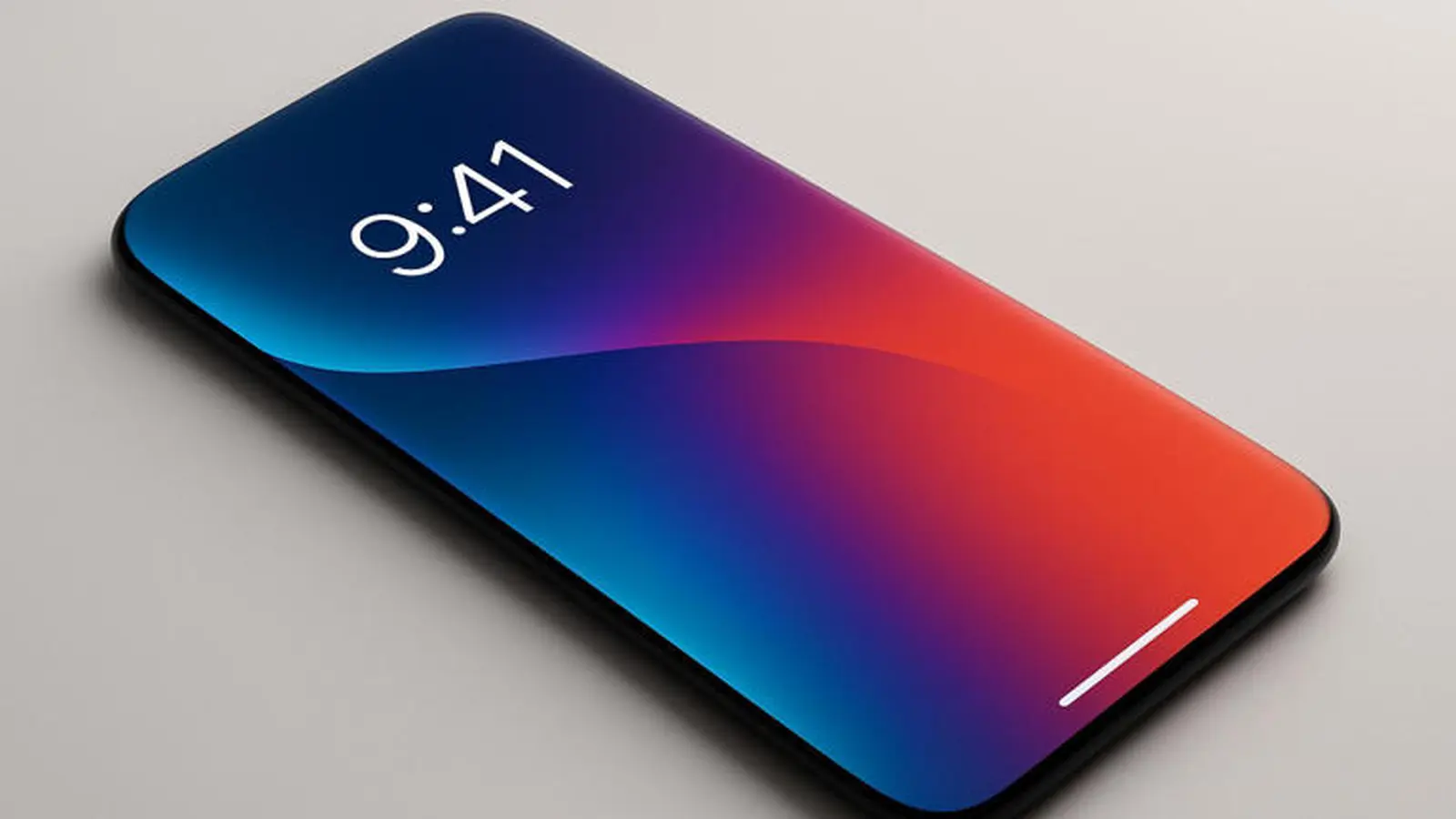5 Minutes
Apple’s 20th‑anniversary iPhone: the wraparound glass concept resurfaces
Apple has been hinting at a bold new approach to iPhone hardware for years, and recent reporting has renewed speculation that a 20th‑anniversary iPhone could finally make the leap to a single, wraparound glass enclosure. Multiple patent filings from Apple outline a device whose front, sides and back are formed from one continuous piece of glass — a significant departure from the familiar two‑panel glass sandwich used on recent models.
Every side of this proposed iPhone could display information or be tapped for controls -- image credit: Apple
According to Bloomberg and corroborating patent evidence, the so‑called iPhone 20 would represent Apple’s first broadly curved iPhone design since 2020, pairing hardware that literally wraps around the chassis with a new Liquid Glass user interface that began public rollout after a 2025 beta. Those patents frequently describe transparent, touch‑sensitive sides and back surfaces that act as additional displays or control surfaces — features that align directly with the Liquid Glass UI concept.
Design and features: what to expect from a wraparound glass iPhone
Unified glass shell and curved display
The core idea is a single piece of curved glass forming the front, sides and rear of the phone. That wraparound glass would house additional display zones visible through transparent sections, potentially expanding usable screen real estate and enabling secondary surfaces for quick controls, notifications or contextual UI elements.
Touch‑sensitive edges and back
Patents describe side and rear displays that are touch‑ and force‑sensitive, allowing gestures along the curved edges or taps on the back to trigger actions. This could power shortcuts, camera controls, volume interactions, or new navigation metaphors that extend beyond the primary display area.

An early render of a round iPhone based on earlier patent filings.
Software synergy: Liquid Glass and the expanded interface
Apple’s Liquid Glass UI — introduced in 2025 — appears designed to take advantage of multi‑surface displays, with fluid transitions and context‑aware controls that move across screen planes. While it’s possible Apple will ship Liquid Glass iOS ahead of the hardware to acclimate users, a simultaneous hardware/software launch in 2027 would maximize the perceived innovation and usability of touch‑sensitive edges and rear displays.
Advantages, comparisons and market relevance
Advantages
- Increased interactive surface area: additional touch zones can reduce menu depth and speed up common tasks.
- New UX possibilities: Liquid Glass combined with wraparound hardware can enable richer notifications and one‑hand gestures.
- Design differentiation: a continuous glass exterior stands out in a market of incremental refinements.

How it compares with previous major redesigns
The proposed 20th‑anniversary iPhone echoes the boldness of the iPhone X redesign. For the 10th anniversary, Apple removed the Home button and introduced Face ID — changes that reshaped the smartphone industry. If Apple pursues an all‑glass, curved form for the anniversary model, it would be a similarly strategic move aimed at defining the next hardware decade.
Practical challenges and manufacturing considerations
Patent filings provide strong evidence Apple has explored the concept extensively, but patents rarely address production cost or yield. The technical hurdles are significant: producing a single wraparound glass shell with integrated displays, touch and force sensors, antenna transparency, and durability at consumer scale requires new manufacturing techniques and tight quality control. That likely explains why such ideas surfaced in patents years before they become viable products.
Use cases and who benefits
- Power users who rely on shortcuts and gestures could see productivity gains.
- Creators and photographers could use edge controls for camera settings without obscuring the main viewfinder.
- Enterprise and accessibility scenarios may benefit from customizable side controls or back gestures.
Market timing and expectations
If Apple follows the reported timeline, Liquid Glass arrived in 2025 while the all‑glass, wraparound iPhone could appear for the 20th anniversary in 2027. Launching software first would let developers and users adapt to new interaction models ahead of hardware that fully unlocks them, but a combined introduction would deliver the strongest user experience impact. Either way, Apple’s repeated patents and persistent rumors make the all‑glass iPhone a credible candidate for a major anniversary release, albeit one contingent on manufacturing feasibility and cost.
Conclusion
An all‑glass wraparound iPhone would be a high‑risk, high‑reward pivot: it promises novel interaction models and striking industrial design while demanding breakthroughs in materials, sensors and production. For consumers and the mobile industry, an iPhone built from a single piece of curved glass and paired with Liquid Glass iOS would mark a clear statement of intent about the next chapter in smartphone evolution.
Source: appleinsider


Leave a Comment